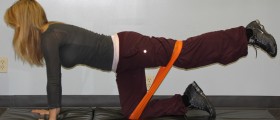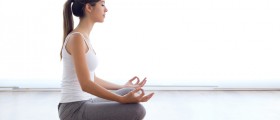
Explaining Muscle Tension in theNeck
Thisarticle is aimed to explain the causes of and offer reasonable solutions to the unpleasant medical phenomenon of: muscle tension in the neck. This type of pain, although it usually manifests itself along the neck, may also spread down to the shoulders causing soreness, as well as it may be the cause to considerable ripping headaches.
These disagreeable circumstances may well be the cause of many people feeling additional tension while working (at their computers) or, more dangerously, still – driving.
The fact that it is quite a common problem, makes this article worthwhile reading.
The Source of the Problem
....quite a bit more frequently than not, stems from the neck spine and its nerves. And this is because these controllers of the neck's muscles, so to speak, sometimes fail to communicate successfully with the muscles themselves. Additionally, a misaligned spine may cause more pressure to the nerves as well as the conjoining bones in the area.
Preventing the Problem
....would involve, first and foremost, a proper sitting position while working or driving. This means that, when looked at from the side, the spine ought to have a smoothly flowing curve. Secondly, the neck should have a C curve of about 40 to 60 degrees.
Such a position keeps the neck, as well as the rest of the spine, relaxed and its nerves free of interference.
Thisposition is also the most favorable one of the spine, in terms of withstanding the force of gravity. This is illustrated by the fact that for each inch of forward drift, an additional 10+ pounds of gravity may press the sitter down, as the muscles work harder, still, to maintain this uncomfortable pose.
Fixing the Problem
Ifthe previously mentioned causes of the problem have been allowed to slip through the sitter's fingers, there are a couple of solutions that may be used to solve the consequences instead.
These solutions involve receiving treatments from Chiropractors or Osteopaths. Alternatively, Massage Therapists and Physical Therapists may help as well.
The former two mentioned may be able to adjust and manipulate the spine into its best position. They will also be able to use muscle stretches or trigger point release techniques. The latter two tend to rather deal with postural exercises instead (even though a Massage Therapist may be able to perform muscle stretches and trigger point release techniques, too).
Havingan increased awareness of the posture while working is as of then a must, as is using a good neck pillow, too.






-Causes,-Symptoms,-Diagnosis,-Treatment_f_280x120.jpg)










Your thoughts on this
Loading...